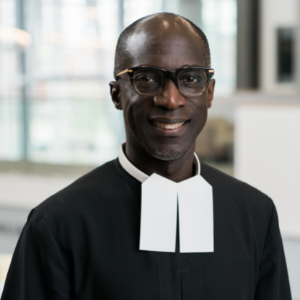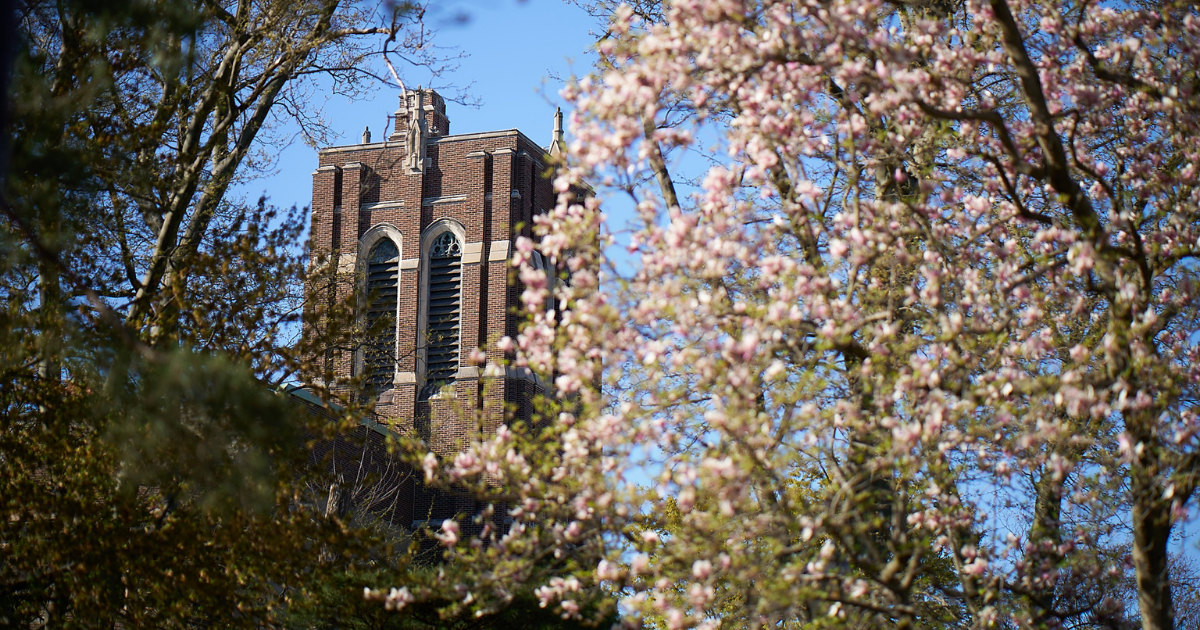La Salle University
Is peace possible?
Opportunities for reflection and proactive response are the aims of International Lasallian Days for Peace.
How can peace be achieved amid rampant division? Global unity and shared resources are places to start, according to the International Council of Young Lasallians (ICYL).
The International Lasallian Days for Peace are an annual ICYL initiative that bridges Lasallians worldwide toward the achievement of peace. According to ICYL, this monthlong effort presents an opportunity for critical reflection on current realities and proactive response to society’s troubles.
 It’s important to note, said Ernest J. Miller, FSC, D.Min., M.A. ’95, that peace represents more than freedom from violence. More broadly, peace also includes “the enduring struggle to end all forms of oppression and suffocation of human dignity and human rights.” To this end, education and raising consciousness are crucial first steps.
It’s important to note, said Ernest J. Miller, FSC, D.Min., M.A. ’95, that peace represents more than freedom from violence. More broadly, peace also includes “the enduring struggle to end all forms of oppression and suffocation of human dignity and human rights.” To this end, education and raising consciousness are crucial first steps.
Br. Ernest, La Salle University’s Vice President of Mission, Diversity, and Inclusion, offers more information on International Lasallian Days for Peace and explains how you can make change toward the achievement of peace:
So… what are International Lasallian Days for Peace?
Br. Ernest: “ILDP represents an annual opportunity to provide a globally shared period for Lasallians to commit to building peace. It’s a month-long span that begins Sept. 21 because that is the International Day of Peace established in 1981 by the United Nations. The spirituality of Saint La Salle and the witness of martyred Brothers of the Christian Schools animates this month-long observance in the four corners of the Lasallian world.”
There’s an overlap between the goal of International Lasallian Days for Peace and your doctoral thesis. The latter focused on the Lasallian commitment to the rights of children. How are global conflicts around the world inordinately impacting children’s pathway to peace?
Br. Ernest: “From Yemen to Venezuela, from the Democratic Republic of the Congo to Syria, from Lebanon to Myanmar, wars inordinately impact children. More than 1 in 10 children worldwide are affected by armed conflict. Those effects are multiple: both direct, like death, displacement, and both physical and psychological trauma, and indirect, like impacts to their living conditions, family separation, public health, education, and more. While we often associate the effects of armed conflict on children as a problem of countries in the Global South, many children in the United States are impacted by levels of violence, environmental degradation, inadequate health care and living condition, among other factors.”
More on ILDP
Here are a few opportunities to participate in the International Lasallian Days for Peace (Sept. 21–Oct. 21):
- Learn more about this year’s theme—Rise Together For Peace
- Register for the Sept. 21 opening prayer service either as an individual or a group/class
- Join the Oct. 21 closing prayer service, which will stream live on YouTube
Mark your calendar:
- Wednesday, Oct. 6, 11 a.m.: La Salle University welcomes Br. Pablo Iván Galvis Díaz, who introduced a literacy program to rebels in Colombia as a mechanism to achieve stable peace, and Br. Carlos Gomez-Restrepo, FSC, the former president of Universidad de la Salle, Bogota, Colombia, where he helped establish Utopia—an educational program in Agronomic Engineering, enabling young people to become leaders capable of achieving social, political and economic transformation of the country. (Registration details to follow.)
- Wednesday, Oct. 13–Friday, Oct. 15: A three-day Peace Teach-In, sponsored by Lewis University, is open to La Salle and other members of the Lasallian Association of Colleges and Universities, or LACU. (Learn more and register.)
What measures could act as remedy?
Br. Ernest: “To respond to what measures could act as a remedy to global conflicts and their horrific impact on children requires more time and space than afforded here. Indeed, it’s complicated because of the human condition. Briefly, we must ground ourselves in a belief that peace is possible, and that vicious cycles of conflict and war can be disrupted. Lack of communication or miscommunication, misunderstanding and misinterpretation are certainly factors in local conflicts. Greed and quest for power and control are other ingredients that feed conflict and war. Witnessing peace with justice through the practice of active nonviolence and reconciliation constitutes a remedy but it takes commitment for the long haul. The struggle for peace, justice, and societal transformation is a long-distance run.”
“For Lasallians, education is a crucial factor to achieve lasting peace and justice creation. Examples where Lasallian education has intentionally stepped into bringing healing in the aftermath of conflict and war includes the Fratelli Project in Lebanon serving Syrian child refugees, and the Utopia project of Universidad de La Salle in Bogota, Colombia, an educational model for peacebuilding and rural development.”
Right here at La Salle, how can the University’s students, faculty, and staff incorporate peace into their daily lives and communities?
Br. Ernest: “Adopt a personal commitment to the practice of nonviolence and reconciliation. Adopt a personal commitment to justice creation. We need to see everyday life as not simply ordinary, but the space in which the meaning of existence is disclosed in day-to-day activities and relationships. Beginning in our neighborhood, on our campus, in our family, and in our networks of friends, we must strive to build a wholesome community environment by practicing radical hospitality and inclusion of all peoples—helping others to live well together.”
—Christopher A. Vito
